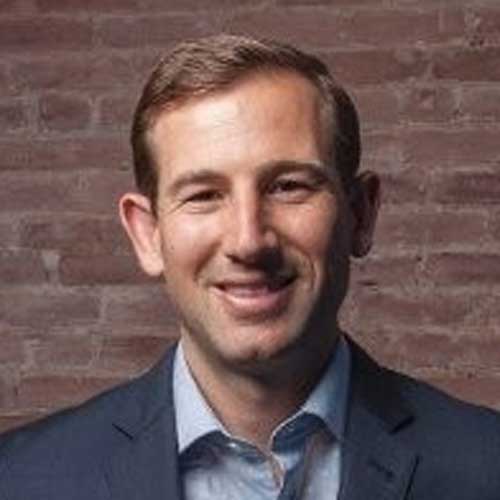Direct-To-Sponsor OZ Multifamily Investing, With Atlas Real Estate Partners
In this webinar, Joe Stampone and Noah Weiss highlight the Atlas strategy of holding multifamily investments for the long term.
Webinar Highlights
- A summary of the Atlas fund, which will invest in four multifamily deals in the Southeast;
- The focus of Atlas on states with “nice weather, and low income taxes”;
- Review of the high growth markets that Atlas is targeting with its fund;
- The characteristics of Southeast multifamily that Atlas believes makes this asset class attractive;
- Live Q&A with webinar attendees.
Industry Spotlight: Atlas Real Estate Partners
Atlas was founded in 2009 by managing principals Arvind Chary and Alex Foster. The two founders bring approximately four decades of institutional experience to the investment platform, which gives Atlas its competitive advantage of identifying and executing on value-add opportunities.
Learn More About Atlas Real Estate Partners
Webinar Transcript
Jimmy: Let’s move along now to our next presenters, which will be Joe Stampone. I’m promoting him to panelist now, and also Noah Weiss from Atlas Real Estate Partners.
Noah: Thank you, Jimmy. And good afternoon, everyone. We only have a few minutes here, so we’re gonna make this very efficient, and hopefully have room for questions at the end. To get to the point, Atlas’ fourth opportunity zone fund has a target raise of $100 million to invest in 4 to 6 multifamily deals in the Southeast. The fund is a continuation of our business, but structured to meet the two specific needs of our existing investor base. One is to provide a vehicle to contribute gains when realized, and, two, to provide diversification. What makes Atlas QF unique is that it is a boutique, direct-to-developer OZ fund with a single layer of fees, is multifamily-only, and is focused on the Southeast.
Founded 12 years ago with a focus on multifamily in the Southeastern Texas, specifically in states with nice weather and low-income taxes, we made early bets on these markets expecting to see outsized population growth. Today, these markets are some of the most thriving markets in the country, and we see this continuing for a long time, which is ideal for OZ investments. The OZ program was a natural fit for Atlas to continue our strategy of holding multifamily assets long-term in the region we know best. My name is Noah Weiss, and I’m MD of Acquisitions and COO of Atlas. With me is my colleague, Joe Stampone, who is our MD of Investments. We oversee much of the sourcing and deal execution of the acquisition of development platforms, as well as oversee operations of the company and the portfolio.
Joe: So Atlas was founded in 2009 by Arvind Chary and Alex Foster as a nimble private real estate investment firm providing direct multifamily investments to high-net-worth and family office investors. Since I joined Atlas as the first employee in 2011, we’ve been extremely active. We’ve closed over 50 deals with a total capitalization of $1.5 billion, including over 10,000 apartment units. We’ve historically raised capital on a deal-by-deal basis, meaning that every deal has to stand on its own, focused solely on multifamily where Atlas has achieved an average 28% gross IRR, not including our Naples property, which we sold 2 days ago for over an 8X gross multiple. This underscores Atlas’ philosophy that real estate is best owned long term, and why Atlas is the ideal opportunity zone sponsor. True to our colors, our three previous QFs located in Nashville and Atlanta have all been single-asset funds with a total capitalization of over $250 million, accounting for over $100 million in equity raised.
Noah: So we are raising $100 million with a minimum investment of $100,000, targeting 4 to 6 multi-family assets in high-growth markets in the Southeast. Differentiated from most blind pool OZ funds, this is a geographic and asset-class-focused, direct-to-sponsor vehicle with three assets already under control. This means that our investors benefit from a single layer of fees and excellent insight in terms of the fund’s investment profile. And as Joe said, Atlas evaluates every deal individually, meaning that each deal needs to stand on its own. The fund’s first deal, a 300-plus unit mid-rise apartment in Charleston, South Carolina, is closing in 30 days. The fund is targeting developments with net IRRs of 12% to 14% and net equity multiples of 2.3 to 2.7 times before OZ benefits. I don’t know if you guys heard of this before at this conference, but, you know, OZ benefits add another 300 to 500 bps after-tax IRR as compared to traditional investment vehicles. Importantly, Atlas targets these returns by employing a low to moderate-leverage strategy.
Joe: So we focus exclusively on multifamily. Multifamily has offered superior risk-adjusted returns and inflation-hedged cash flows for decades, and Atlas focuses on Southeast multifamily for three simple reasons. One, above average and accelerating population and job growth. Two, an estimated national three million unit shortfall in total housing units. And three, an accelerating housing affordability crisis. We’re shifting to a nation of renters and we have a bullish outlook on high-quality multifamily assets in growing Southeast markets. So what makes the Atlas Opportunity Zone Fund different? First, Atlas is hyper-focused on preservation of capital, and we only pursue high-quality deals that work with conservative leverage and are attractive irrespective of the opportunity zone benefits. Additionally, Atlas is highly flexible in deal structuring, allowing us to partner with local developers and sign up deals at a below-market land value and pass on the savings to our investors by contributing land at its original basis. And given that we have an in-house development team, we develop our own deals allowing for a single layer of fees.
Noah: So Atlas deals have a couple pervasive themes. Our markets have strong local long-term demographic tailwinds. Our sites are in soon-to-be core locations. Our design is timeless, but authentic to the locations we build in. And our properties have broad appeal across a wide range of renters.
Joe: We wanted to briefly highlight our past opportunity zone deals. When the OZ legislation was initially passed, Atlas focused on identifying the highest-quality development sites within fast-growing submarkets. As an example, in 2018, we identified two prime sites in Nashville’s Wedgewood-Houston neighborhood, which we saw as to off-market in a highly attractive basis. At the time, the submarket was under the radar, but had catalytic tailwinds and possessed fundamentals we look for on all sites. Today, WeHo is the creative center of Nashville, one of the top OZ submarkets in the country, and home to high-profile companies such as Soho House, Live Nation, and Apple Music. We’re delivering our first OZ development, Standard Assembly, within the next few weeks. Standard Assembly is a 310-unit mixed-use community with 13,000 square feet of retail.
What makes the property unique is our intense focus on maintaining the character of the neighborhood, which is highlighted by our branding, use of materials, and our partnership with local firms such as our branding agency, PR firm, and architect who are all based in the WeHo neighborhood. We believe the design will prove timeless and the local character will resonate with prospective residents leading to long-term outperformance. The property is currently pre-leasing and achieving rental rates significantly above our initial proforma. Quickly, here’s a look at two of our other previous OZ deals located in Nashville and Atlanta. Westerly House is a 246-unit property located in Nashville’s WeHo neighborhood, featuring smaller unit types such as micro-units, co-living, and purpose-designed STRs. The project’s currently under construction and set to deliver in 2024. The Hawkins is a 192-unit transit-oriented development in the Chamblee submarket of Atlanta, and the project’s set to break ground in early 2023.
Noah: So this map visualizes our target markets in light blue, some of our existing assets in orange, and our pipeline in yellow. As you can see, we focus around areas that we own assets or where we formally owned assets, as in the case of Texas. Atlas has three deals that are currently under control and through preliminary design. Our Atlanta deal is a mid-rise property in the west side neighborhood directly on an Atlanta BeltLine Trail, which is one of the most important economic catalysts in Atlanta. The property is surrounded by transformative developments and is poised to greatly benefit from Microsoft’s planned 93-acre campus, which will be located along the same extension trail and add an additional 15,000 jobs to the market. The Charleston midrise deal will close in December and is a collaboration with a great partner of ours that we’ve done two previous deals with. We’ll go into a bit more detail on this transaction on the next slide.
The Hilton Head/Savannah deal is a garden sale product within one of the fastest-growing submarkets in the Southeast. Ideally located equidistant from Savannah and Hilton Head, and with numerous access to retail, recreation, and a wide range of job centers, this project will provide a differentiated living experience to young professionals. And we pride ourselves on excellent disclosure, and so any prospective investors can receive a write-up on each of these deals if interested. So here’s Charleston. Charleston is a fully-entitled site in a notoriously hard-to-develop market and is closing next month. We were immediately drawn to the neighborhood’s parallel, to the WeHo submarket in Nashville. The project is located in the NoMo Creative Corridor, a rapidly growing neighborhood on the peninsula that has emerged as a trendy area and hub for startups, creative industries, and innovation. NoMo has a cool factor and has attracted many creative offices, bars, restaurants, event spaces, live music venues. Within walking distance of our project are several breweries, bars, new class-A office spaces, planned mixed-use developments, and The Wonderer, which is a native-born Soho-House-styled social club.
Similar to our national projects, we were immediately drawn to the neighborhood and the catalytic growth coming its way. Several transformational projects have been announced or are currently underway, including the Magnolia Project, a 200-acre mixed-use campus by Portman Holdings and Highland Resources, a 196-acre mixed-use development by Lubert-Adler and Clement Development called Laurel Island, and Jamestown’s 45-acre Navy Yard Charleston. Combined, these three projects are expected to bring thousands of new jobs to the area with over 2.5 million square feet of transformative office, retail, hotel, and residential development. Now, before we wrap up for questions, here’s a look at our fantastic and growing team, which is evenly split between New York and Miami. One thing to highlight is that the culture is very strong in Atlas. Atlas, we have institutional experience with entrepreneurial spirit, and this culture is pervasive in everything that we do. This leads to a long-tenured team, high collaboration, effective communication, and a lot of fun. We love what we do and we hope to have you as an investor. Jimmy?
Jimmy: All right. Well, thank you. That was great. And thank you for being here on “OZ Pitch Day” as a first-time presenter and sponsor of the event. Really appreciate your presentation, Noah and Joe, great job there. We do have a few questions. By the way, if you have any questions for Noah and Joe about their opportunity zone platform, please use the Q and A tool in the Zoom toolbar. If we don’t get to all of them, I’ll make sure I pass them along. But first question is you mentioned direct to sponsor at one point early on in your presentation. We got a question right away about that. What do you mean by that exactly?
Noah: It means we develop our own deals, and we obviously…
Jimmy: That’s easy.
Noah: And rather than in some funds that you invest in the funds then they invest in other deals, and so you’ve gotta promote at the deal level, then you’ve gotta promote at the fund level.
Jimmy: Gotcha. You mentioned… Another question here says, “You mentioned conservative leverage. What do you mean by that exactly? What’s your typical range of loan to value?”
Noah: We’re typically in the 55% to 60% range.
Jimmy: Okay. This is a question for me now. It’s a hard question for me. “Has the increasing cost of debt over the last few months impacted that plan at all?”
Noah: Well, luckily, we were already targeting 55% to 60% leverage, but I would say that our availability of debt has kinda come down closer to where we were already targeting.
Jimmy: Good. So…
Noah: But definitely it’s…I mean, I’d be lying to say that it’s not harder to get debt now than it was six months ago.
Jimmy: It’s harder for everybody, right? So just curious about that. Is there any concern that these Southeast markets are getting overbought or is this less of a concern if you’re purchasing raw land?
Noah: So, I mean, obviously we like overbought because we like to sell into that, but we do see prices coming down, and it’s really more about the long-term tailwinds that these markets are seeing, and where we expect to exit 10 years from now. Joe, I’m not sure if you have anything to add to that.
Joe: Yeah, and I would just add to that. We are extremely site-selective. As Noah mentioned, this is a four to six asset fund, so extremely boutique. So we’re really buying the best sites in the markets that we’re the most bullish on long term. So, certainly, you know, there are probably supply challenges in some of these markets, but we’re incredibly site-selective.
Jimmy: Good. A question from Mora coming in here asks, “You mentioned four to six properties. Can you address the other potential projects for this fund?”
Noah: So we listed the ones that are under control. Those are in the Savannah/Hilton Head, Atlanta, as well as Charleston. We have other projects there in the pipeline in Austin and St. Pete, in a couple of their markets that are not currently under control. They’re all gonna be in the Southeastern Texas.
Joe: Yeah, and Jimmy, the one thing I’d add is, you know, I think given, you know, some of the challenges in the capital markets, we’re seeing some really interesting opportunities come our way. And, you know, one of the biggest advantages of having a fund is having discretionary capital where we can act quickly. So have the opportunity to ideally pick up some really attractive sites given some of the current disruption.
Jimmy: Good. And then we got a final question here came in from a couple of folks actually asked the same question, “Do any of the GPs, or do you guys have any cash in this fund yourself?”
Noah: Absolutely.
Jimmy: Good. We always like to see that. So I think that’s it for the questions today. We’re a little bit long on time, too, so I will cut you guys loose there. But thank you again for participating on “OZ Pitch Day” today. Can you put up that slide with the contact information one more time?
Joe: Yes.
Jimmy: In case anybody wants to get in touch with you, we’ll know where to send them.
Noah: We’ve got the email address as well as a fund-specific website, which is atlasrepoz.com.
Jimmy: stlasrepOZ.com. I’m gonna type that in the chat right now too.
Noah: And [email protected] is the contact.
Jimmy: Perfect. All right. Gentlemen, really appreciate your time again. I’ll cut you loose there. And we’ll be talking to you soon. We’ll get this recording out to everybody in the coming days here. All right?
Noah: Thank you so much.
Joe: All right. Thank you.
Jimmy: All right. Thank you, guys.
Noah: Cheers.



